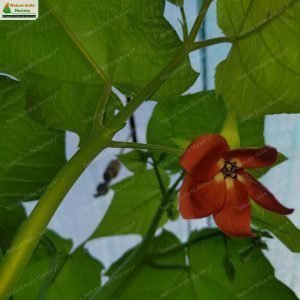Neolamarckia cadamba, commonly known as the Kadamba tree, is a large tropical evergreen tree that grows up to 45 meters tall, native to South and Southeast Asia. It is highly valued for its rapid growth, ecological significance, and various uses.
The leaves are large, measuring 13-32 cm (5.1-12.6 inches) long, and are arranged oppositely. The tree produces sweetly fragrant, red to orange flowers in dense, globe-shaped clusters, which bloom when the tree is about 4-5 years old. The fruit is a fleshy, yellow-orange infructescence containing numerous small seeds.
Habitat
Neolamarckia cadamba is native to South and Southeast Asia.
Planting and Care
-
Seeds: Neolamarckia cadamba can be propagated from seeds.
-
Sunlight: Prefers full sunlight but can tolerate partial shade.
-
Soil: Thrives in well-drained soils that are rich in organic matter. It can tolerate a wide range of soil types, including sandy, loamy, and clay soils. The tree prefers moderate to high levels of moisture but can tolerate drought once established.
-
Watering: Requires regular watering, especially during the first few years of growth to establish a strong root system. Once established, the tree can tolerate drought conditions but benefits from additional watering during dry periods.
Additional Information
-
Wildlife Significance: Provides shelter and food for various insects and birds, and attracts bees and other pollinators with its fragrant flowers.
-
Economic Value: The wood is used for making furniture, paper, and construction materials. Various parts of the tree are used in traditional medicine to treat ailments such as fever, digestive issues, and skin diseases. The fragrant flowers are used in the perfume industry to create essential oils and fragrances.
-
Cultural Significance: The Kadamba tree holds cultural and religious importance in India, often associated with Lord Krishna.




